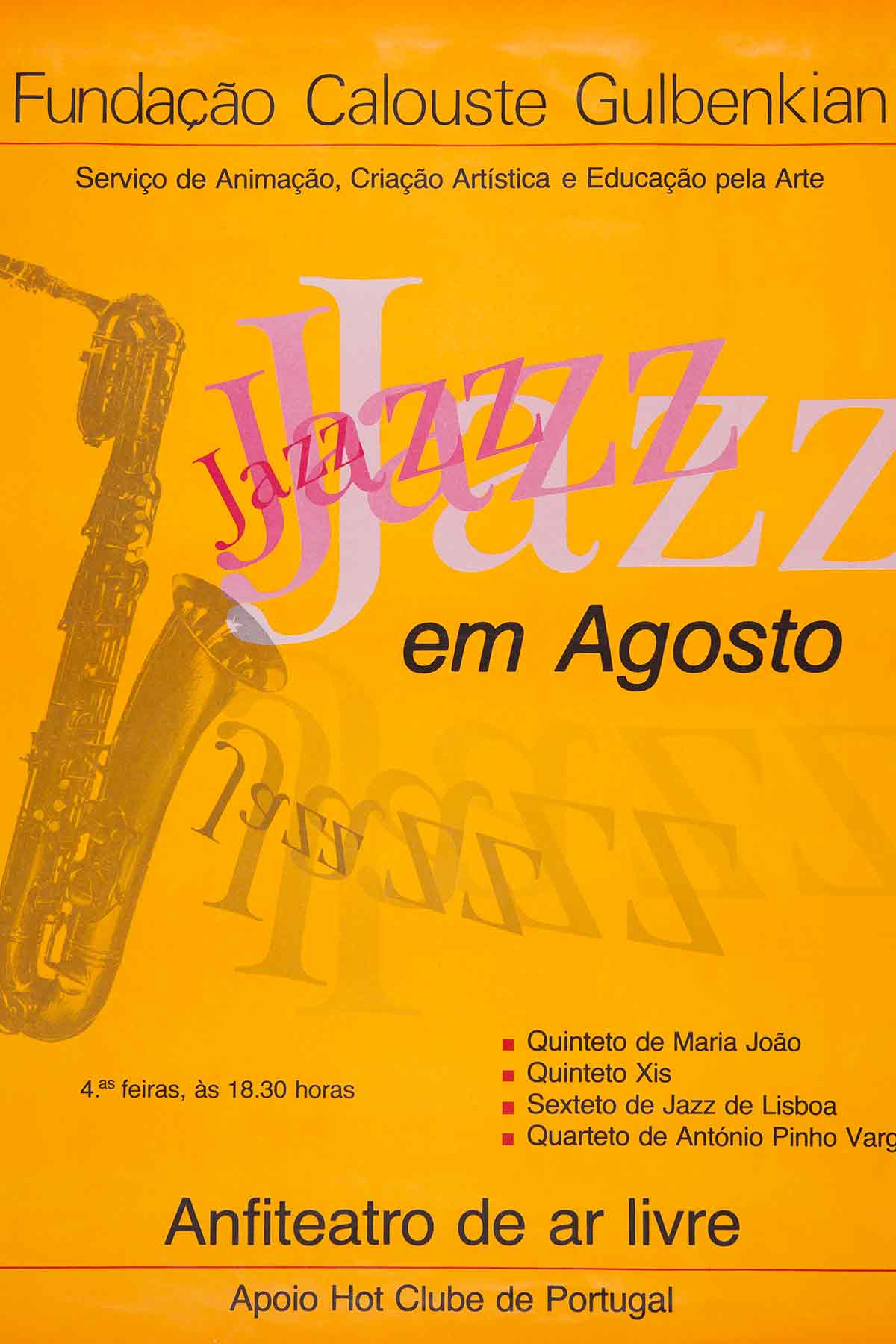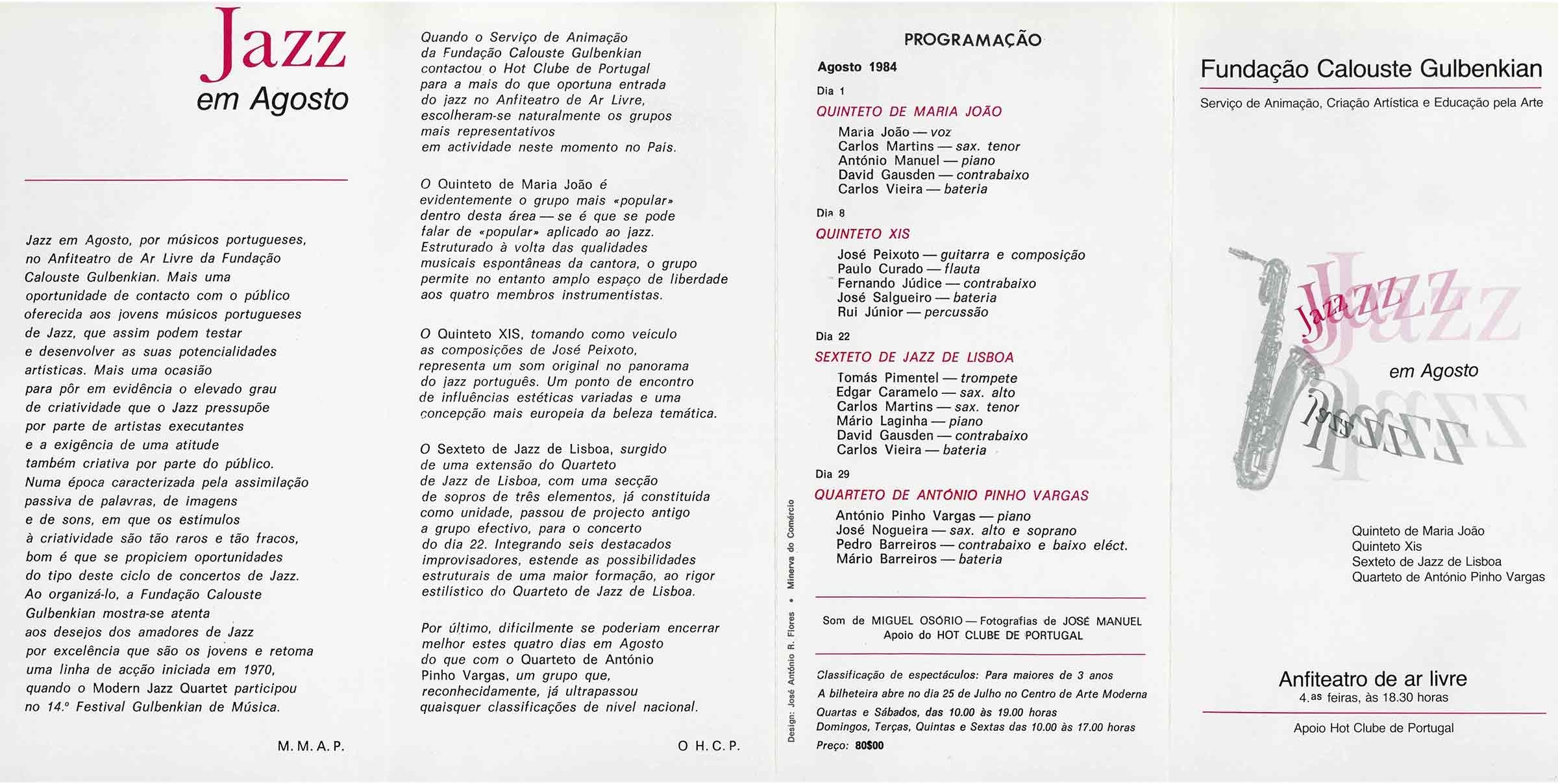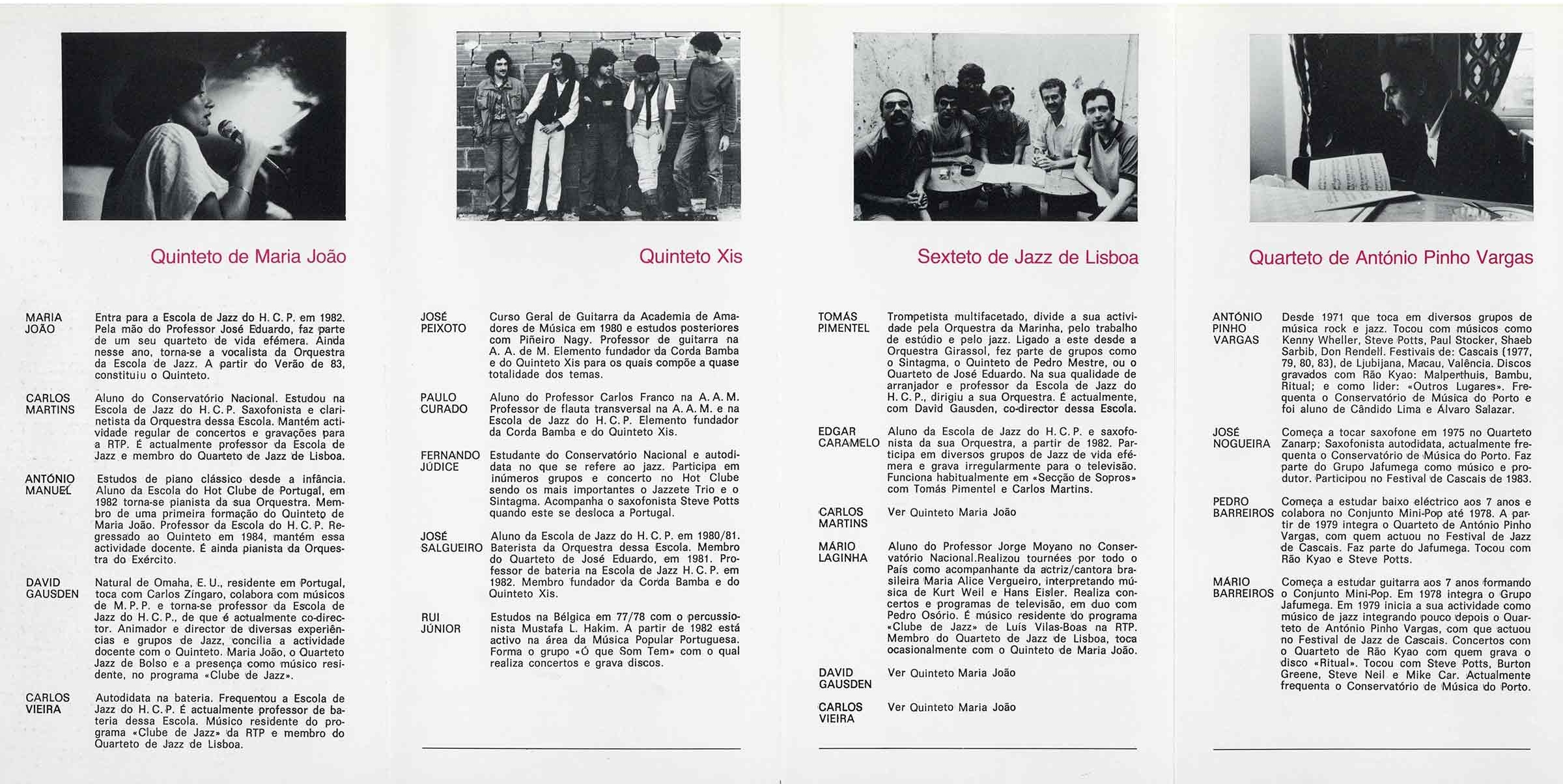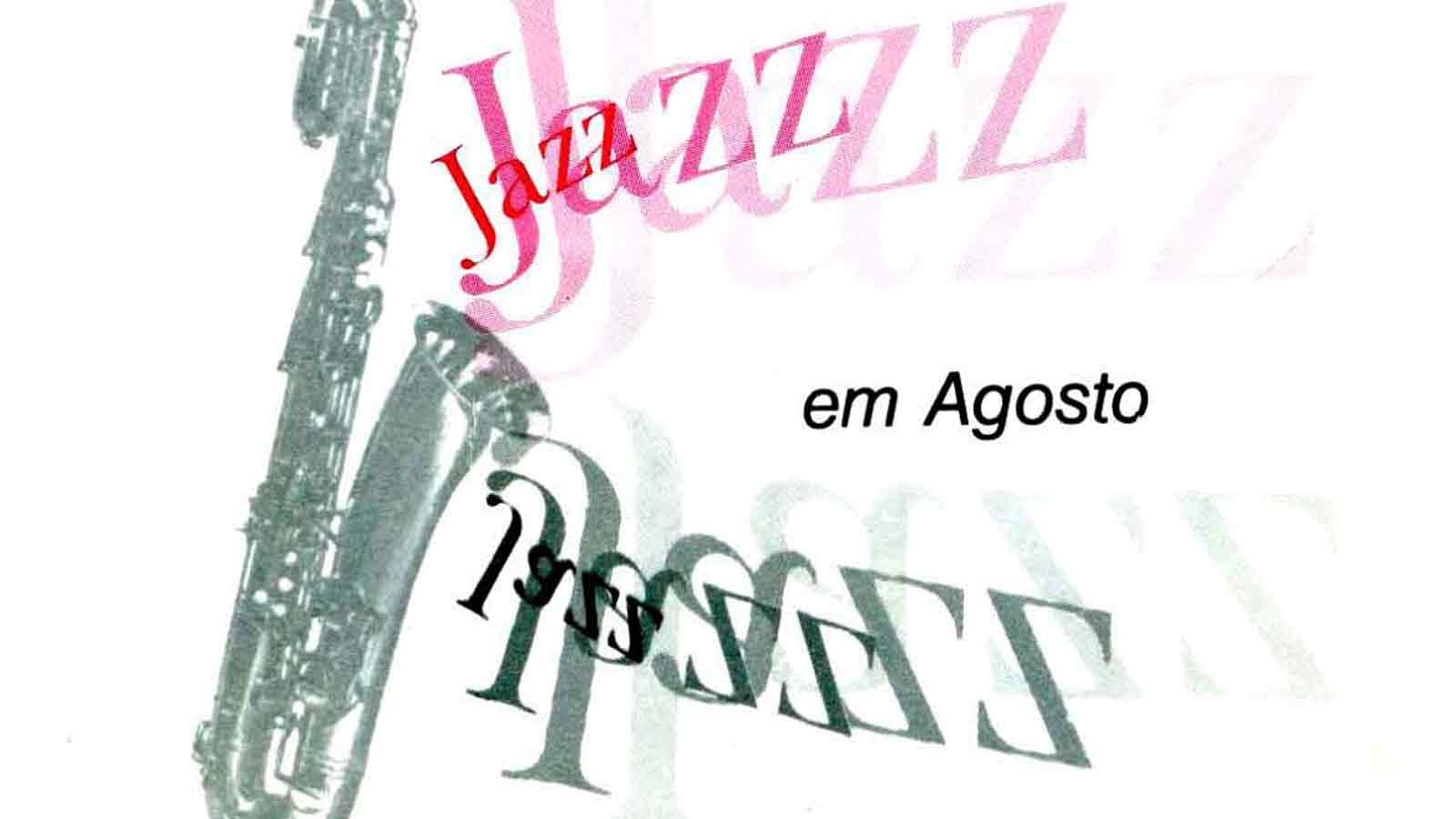The First “Jazz em Agosto” at Gulbenkian
The summer jazz festival – Jazz em Agosto – has featured on ACARTE’s programme since the outset. ACARTE – Animation, Artistic Creation and Education through Art Department (1984-2003), founded by resolution of the Gulbenkian Foundation directors of 17 April 1984, grew out of the former Community Arts, Artistic Creation and Education through Art Department of the then newly created Centro de Arte Moderna, where it functioned as an autonomous unit.
Under Madalena de Azevedo Perdigão’s leadership, ACARTE quickly established itself as a powerful modernising force in the arts in Portugal, with a programme of events that was deliberately multidisciplinary, experimental, avant-garde and internationally-oriented, acting as a bridge between popular, urban and suburban cultures.
The Foundation’s regular concert season enjoyed by this time an established reputation for the high standards of its classical music programmes. The inclusion of jazz – still a relative newcomer to artistic life in Portugal – in the Gulbenkian’s programme was part of this process of modernisation and of reaching out to new audiences, which ACARTE set out to achieve.

The first Jazz em Agosto featured an all-Portuguese line-up.
More than half of this group of musicians were players at the Hot Clube de Portugal, the prime mover in the Portuguese jazz world and responsible for programming the festival. Of these artists, a considerable number appeared at subsequent editions of the festival (especially under Madalena Perdigão’s leadership), sometimes in different groups or breakaway ensembles.
Others returned to take part in other musical events – in the fields of jazz, classical music, theatre, or dance – organised either by ACARTE or by other departments in the Foundation, such as the Music Department. Some went on to be leading lights on the Portuguese jazz scene.


On the administrative and financial side, and in terms of technical and artistic production, the first Jazz em Agosto, regarded by many as experimental, like other events in ACARTE’s 1984 programme, relied to a significant extent on improvised solutions and somewhat informal arrangements. This aspect did not escape the notice of the Chairman, who nonetheless had no hesitation in praising the cultural and artistic merits of the venture and put the problems down to the obvious lack of material and human resources in the newly created department.
This situation also turned the spotlight on the question of coordination between the new unit and the Foundation’s other departments, especially those promoting the arts. It is interesting to note here that, at the same meeting in September 1983 at which the Board decided to appoint Madalena de Azeredo Perdigão to head the Animation, Artistic Creation and Education through Art Department at Centro de Arte Moderna, with the rank of Departmental Director, they also adopted the following recommendation:
“… the Gulbenkian Foundation Departments should continue to pay special attention to bringing the arts to all areas of the country, through an integrated approach, to which end a spirit of collaboration between Departments should be cultivated, and efforts to promote the arts should be duly coordinated by the Board, and not carried on as if in watertight compartments.”
Minutes of meeting 41/83, 13 September
From the Archives
Significant moments in the history of Calouste Gulbenkian and the Gulbenkian Foundation in Portugal and around the world.

